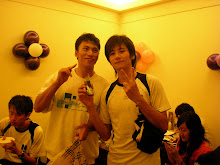Townsend, J. T., & Honey, C. J. (2007). Consequences of base time for redundant signals experiments. Journal of Mathematical Psychology, 51(4), 242-265.
Abstract:
We report analytical and computational investigations into the effects of base time on the diagnosticity of two popular theoretical tools in the redundant signals literature: (1) the race model inequality and (2) the capacity coefficient. We show analytically and without distributional assumptions that the presence of base time decreases the sensitivity of both of these measures to model violations. We further use simulations to investigate the statistical power model selection tools based on the race model inequality, both with and without base time. Base time decreases statistical power, and biases the race model test toward conservatism. The magnitude of this biasing effect increases as we increase the proportion of total reaction time variance contributed by base time. We marshal empirical evidence to suggest that the proportion of reaction time variance contributed by base time is relatively small, and that the effects of base time on the diagnosticity of our model-selection tools are therefore likely to be minor. However, uncertainty remains concerning the magnitude and even the definition of base time. Experimentalists should continue to be alert to situations in which base time may contribute a large proportion of the total reaction time variance.
Note:
This paper discussed the consequence of base time in the redundant-signal design (RSD). The reaction time in the redundant-signal condition (RS) is faster than that in the single-target (SS) condition, showing a RS facilitation effect. Jeffery Miller (1982) developed a race model inequality to test the effect.
Assumption:
(1) In separate channels, the evidence is accumulated toward completion. Different channels are processed in parallel.
(2) The rate of processing in each channel is invariant across SS and RS condition (so-called context invariance).
(3) Obeyed the minimum-time stopping rule.
(4) Each channel is processed independently.
1-3 à race model 1-4 a race model with independent channel
The base time is also called the residual time or non-decisional time (see Ratcliff’s diffusion model). The base time includes two components: the time for basic sensory system to transfer information to higher processing centers and the time to execute a motor response.
* The presence of base time serves to decrease the maximum sensitivity of the race model inequality to the detection of the race model inequality.
* The presence of base time should lead the capacity coefficient to underestimate the capacity.
To exclude the base time component in the RT data, the estimation will be more precise.
This blog is about my research and what I am interested in. I will keep updating new information. Hope all of you enjoy it.
Labels
訂閱:
張貼留言 (Atom)
About Me

- Yang Cheng-Ta (楊政達)
- I am Yang Cheng-Ta. I am a assistant professor at the department of psychology and institute of cognitive science, National Cheng Kung University (NCKU). I graduated from National Taiwan University (NTU). My supervisors were Prof. Yeh Yei-Yu and Prof. Hsu Yung-Fong. My major is cognitive psychology and mathematical psychology. My research interests are human attention and memory. My research topic is about why people cannot detect a change in the visual environment which is so-called “change Blindness”. I investigate the mechanism underlying change detection and how people make a correct detection decision. I am also interested in the mathematical modeling of human behavior. Besides, I like to play volleyball, go to gym, and swim when I am free. I also like to listen to the Chinese opera and still keep learning it. These are brief descriptions about me. If you are interested in me or share interests with me, contact with me at yangct@mail.ncku.edu.tw.
My Web
Personal Information
Conference
- 2010.3.7.-3.12. annual meeting of visual science society ()2009.12.1.截止)
- 台灣心理學會第48屆年會,9.26.-9.27.台大開會。投稿時間即將於7月31日截止。
- The 50th Annual Meeting of psychonomic society at Boston 2009.11.19.-11.22. (6月1日前截止投稿)
- 2009.6.24.-6.25. workshop of attention and perception (5.27.前截止投稿)
- 2009.8.1.-8.4. conference of Math Psych (4.31.截止)
- Annual meeting of visual science society May 8-13, 2009 (12.2.截止投稿)
- 第47屆台灣心理學年會 師大 (7.31截止)
- 13th workshop of attention and perception(嘉義中正大學)
- OPAM November, 13th, 2008, Chicago, Illinois ( 7月1日截止)
- 49th ANNUAL MEETING OF THE PSYCHONOMIC SOCIETY, Chicago Hilton Hotel, Chicago, Illinois, Thursday, November 13 – Sunday, November 16, 2008 (6月2日截止)
- NathPsych (四月一日截止)
- 華人心理學會註冊
- 2008.6.11-14 第六屆華人心理學家學術研討會 (一月底截止)
Shared Resources
- 用endnote寫論文
- working memory guides attention的討論文章
- E-Prime範例八:reaction time and accuracy
- E-Prime 範例七:feature integration theory
- E-Prime範例六:staircase 直接用程式顯現螢幕顏色
- signal detetcion theory
- OL釘書機
- E-Prime範例五:改變偵測(隨機指定位置與顏色)
- E-Prime範例四:stair case(二下一上)
- E-Prime範例三:false memory
- 神奇撲克牌變色魔術
- E-Prime範例二:primary memory
- E-Prime範例一:depth of processing
- Youtube 整理change blindness的範例
- E-Prime User's Guide
- E-Prime Introduction
- E-Prime data analysis
- E-Prime 中文使用說明 (「林思宏」改版,第一版由「黃卓寧」(2005.9.)撰寫)
Useful Links
- slideshare
- Associations for Psychological Science
- Visual Science Society
- 行政院國科會
- Psychonomic Society
- American Psychological Association
- Society for Mathmatical Psychology
- Yahoo MathPsych student
- National Taiwan University
- Department of Psychology, National Taiwan University
- ScienceDirect
- Taylor & Francis
- IngentaConnect
Online Resources
- Lee's homepage introduciton to matbugs
- hint of writing winbugs
- Matbugs: use matlab to interface with winbugs
- how to use winbugs and related issues (by 林永雋)
- Bayes data analysis
- 2008 科學季 眼界奇觀 (我與大學部小朋友共同製作)
- Hierarchical Signal Detection Model (Jeff's lab)
- labmeeting
- American Journal Experts
- ERRNET
- A theory of visaul attention
- STATSOFT
- E-Prime
- E-prime tutorial
- R
- Pubmed
- MatLab Codes
- Google Scholar
- Semantic association calculation
- Neuroimaging Resource
- Association Norm
沒有留言:
張貼留言